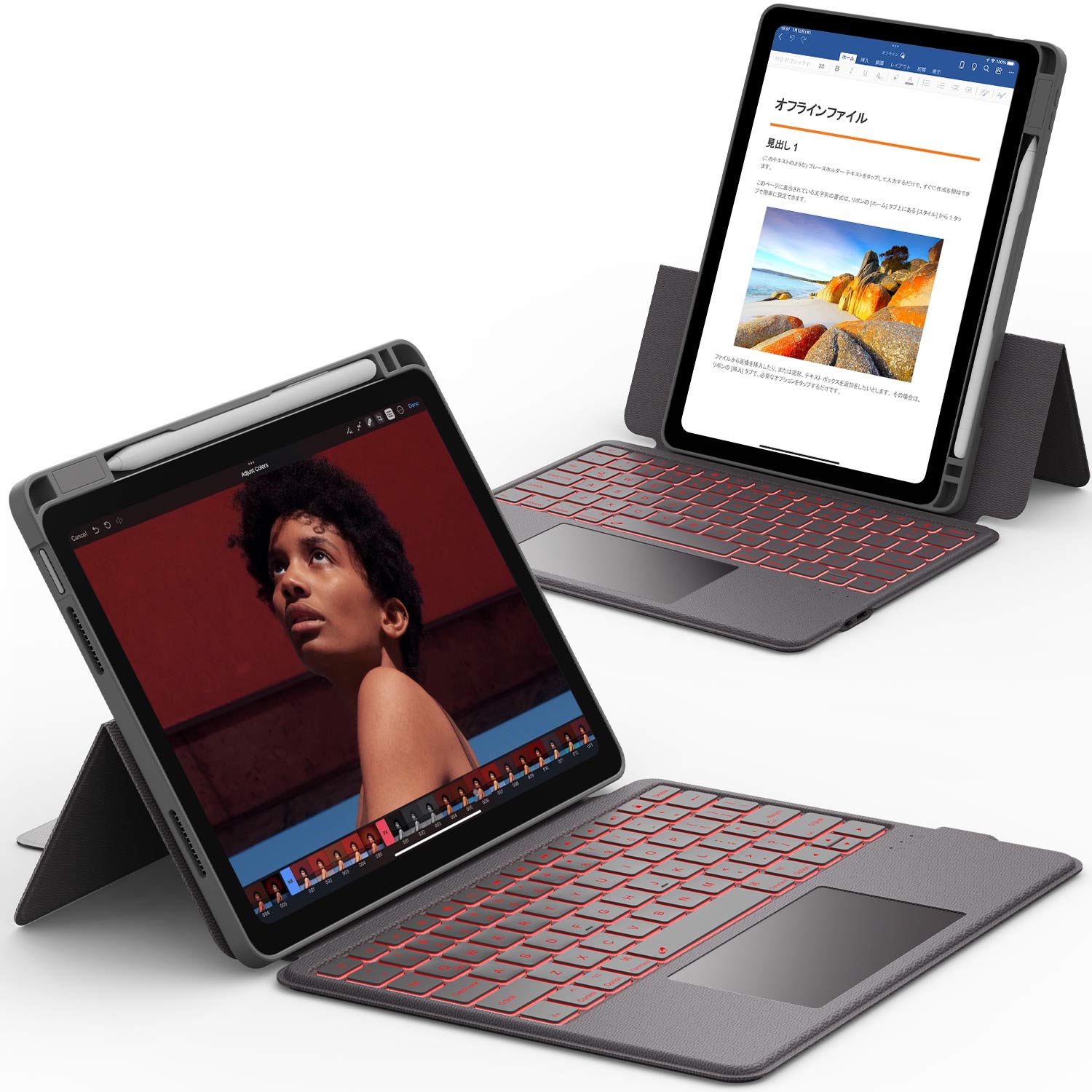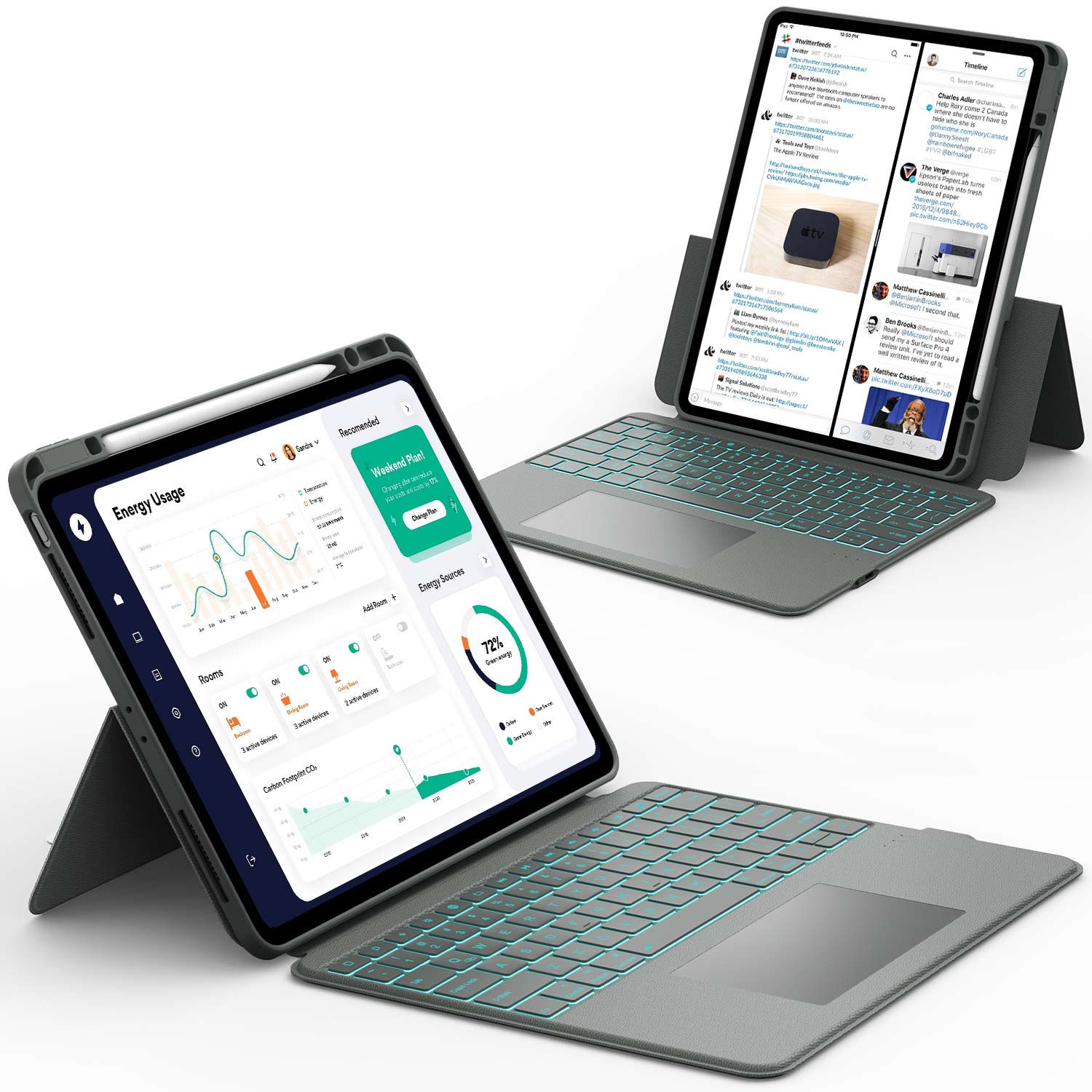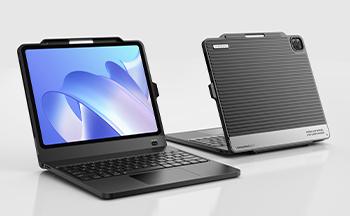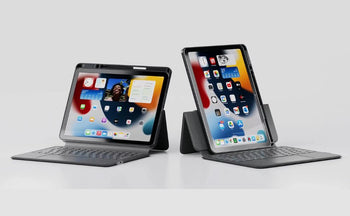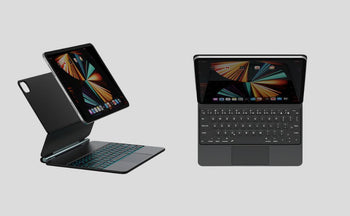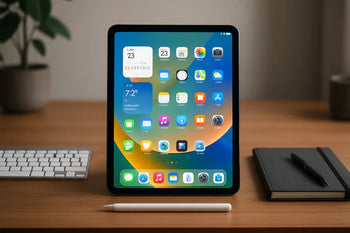Typing on an iPad Pro isn’t one-size-fits-all—it adapts to you. The built-in virtual keyboard offers QuickPath swipe typing, predictive text, and even voice dictation for fast, on-the-go input.
But if you crave a laptop-like feel, the Apple Magic Keyboard or other third-party options deliver tactile keys, a responsive trackpad, and handy shortcut rows. That combo makes long writing sessions, emails, or creative work far smoother.
Whether you prefer sleek touch controls or the satisfying click of real keys, the iPad Pro gives you multiple ways to transform typing into a powerful, customized experience. Read on to find your best setup!
Key Takeaways
- Learn how to start typing on iPad Pro with built-in and external keyboards
- Discover features that make typing faster and easier
- Find tools and accessories that boost comfort and productivity
Read our guide: How Do I Know What Size iPad I Have? A Quick Guide to know your exact model in just a few steps.
Getting Started With Typing on iPad Pro

Typing on your iPad Pro can feel pretty natural once you know how to pull up the keyboard, change its style, and pick the right layout. You can use the onscreen keyboard, split it for thumb typing, or connect a physical keyboard if you want that laptop feel.
Accessing the Onscreen Keyboard
The onscreen keyboard pops up whenever you tap inside a text field, like a search bar, note, or message. If it doesn’t show up, just tap the screen again—it usually works.
In some apps, you can bring it up manually by swiping down with two fingers. When the keyboard appears, you’ll spot a row of predictive text suggestions above the keys, which can speed things up since you can just tap a word instead of typing it out.
To hide the keyboard, tap the little down arrow at the bottom-right. That gives you more space when you’re not typing.
If you use Apple Pencil, tapping inside a text box brings up the keyboard too. It’s handy for switching between handwriting and typing without fuss.
Switching Between Keyboard Modes
The iPad Pro keyboard isn’t stuck in one mode. You can use full-screen, floating, or split modes depending on how you’re holding the device.
- Full-screen mode is the default, stretching across the bottom for two-handed typing.
- Floating mode shrinks the keyboard into a tiny box you can move anywhere. Pinch in with two fingers to make it float.
- Split mode divides the keyboard for easier thumb typing when you’re holding the iPad.
Switching modes is quick—just pinch in or out with two fingers for floating mode, or use the keyboard settings button (that little keyboard icon) to pick split or docked options.
Each mode has its sweet spot. Full-screen is nice on a desk, floating mode is clutch when multitasking, and split mode is best for portrait grip.
Understanding Keyboard Layouts
The default is a QWERTY layout, but you can swap it in Settings > General > Keyboard > Keyboards. There are options like AZERTY, QWERTZ, and layouts for other languages.
You can enable QuickPath, Apple’s swipe-to-type feature. Just drag your finger across the letters instead of tapping each one. It’s actually pretty fast for short words or one-handed typing.
If you type in multiple languages, add more keyboards. After that, hold the globe icon to switch quickly.
The keyboard supports shortcuts too. Hold certain keys, like letters with accents, to see extra options. Long-press the period key for quick punctuation.
Plug in a physical keyboard and you get more shortcuts—like Command + Space to switch apps, or Command + Tab to move between windows. It really makes the iPad Pro feel more like a laptop.
Read our article, What Is the Difference Between an iPad Case and an iPad Cover? to understand which one is right for you.
Essential Typing Features and Customization

You can change how the iPad Pro keyboard works to fit your style. Small tweaks in settings, gestures, and layout options can help you type faster and with way less effort.
Keyboard Settings and Preferences
Head to Settings > General > Keyboard to control how the on-screen keyboard acts. You can turn on Auto-Correction, Predictive Text, and Smart Punctuation. These tools cut down on mistakes and save time.
Add multiple keyboards for different languages if you want. Switch between them with the globe icon. If you bounce between languages, this really smooths things out.
Another handy trick is Shortcuts. Create text replacements, like “omw” for “On my way.” It’s a lifesaver if you hate typing the same phrase over and over.
If you use an external keyboard, you can tweak modifier keys and keyboard brightness. That makes longer writing sessions or app switching a bit more comfortable.
Enabling and Using Swipe Keyboard
The swipe keyboard (QuickPath) lets you slide your finger across letters instead of tapping. To turn it on, go to Settings > General > Keyboard and make sure Slide to Type is enabled.
This feature is best for quick messages. It uses predictive text to guess your words while you swipe, which can really speed up one-handed typing.
If the word’s off, tap the space bar to see other suggestions. Swipe typing also works in multiple languages, as long as you’ve got those keyboards installed. Switch with the globe icon, and the system figures out each language’s quirks.
For accuracy, lift your finger after each word. The keyboard adds a space automatically. With a little practice, it’s faster than tapping—especially on smaller iPad Pro models.
Adjusting for One-Handed Typing
If you usually type with one hand, the iPad Pro has a one‑handed keyboard mode. Press and hold the emoji or globe key, then tap the left or right keyboard icon. The keyboard shifts to one side for easier thumb reach.
This is super helpful on the bigger iPad Pro models, where the keyboard can feel too wide. You can switch back any time the same way.
One-handed mode works with both regular and swipe typing. The keys don’t shrink too much, so you can still type comfortably without fumbling.
With an external keyboard, you can even remap shortcuts for one-hand use. For example, set the Command key to act as Control, so common shortcuts are easier to reach.
Check our guide, iPad Recovery Mode: How To Fix Your Device in a Few Steps to solve common issues quickly.
Advanced Typing Techniques and Productivity

Typing on an iPad Pro isn’t just about tapping letters. You can work faster by learning how to deal with uppercase letters, special characters, shortcuts, and fast editing tricks.
Using Uppercase and Special Characters
Tap the Shift key for uppercase, or double-tap it to lock Caps Lock. This comes in handy for names, acronyms, or shouting (if that’s your thing).
For special characters, press and hold a key. For example, holding “a” shows options like á, ä, â. That’s great for writing in other languages or adding flair.
Hit the .?123 key for numbers and symbols. Tap #+= for even more. You’ll get punctuation, math signs, and currency symbols right there.
Tip: Long-press the period key for a quick list of punctuation. It’s a little thing, but it saves time.
Text Input Shortcuts
Create shortcuts to type faster. For example, set “omw” to become “On my way!” in Settings > General > Keyboard > Text Replacement.
The keyboard suggests words as you type, learning from your habits and offering quick picks above the keys. Tap one, and it pops right in.
You can also use QuickPath—just slide your finger across letters to form words. This swipe typing works for one-handed use and can be faster than tapping.
Shortcut examples:
- brb → Be right back
- addr → Your full address
- ty → Thank you
Editing and Correcting Text
Editing text on iPad Pro is easier with gestures. Tap and hold the space bar to turn the keyboard into a trackpad, so you can move the cursor wherever you want.
Double-tap a word to select it, or triple-tap to select a whole sentence. Drag the selection handles to highlight more text.
To undo typing, swipe three fingers left. Swipe three fingers right to redo. These gestures replace extra buttons and keep things moving.
For quick fixes, use the predictive bar to swap a misspelled word for the right one. That way, you stay in the flow without retyping.
Discover how to secure your device by reading, How To Lock Your iPad Screen: Easy Ways To Secure Your Device
Get the Best Keyboard Cases From Chesona

A good keyboard case can completely change how you type on your iPad Pro. Chesona makes some of the best options, giving you a laptop-like feel while keeping your device safe.
You get a full keyboard, trackpad, and adjustable stand all in one—basically turning your iPad into a lightweight laptop.
Chesona Rugged Keyboard Case – A tough, protective case with a magnetic detachable keyboard, 7-color backlit keys, and a precise multi-touch trackpad. Perfect if you need durability and flexibility.
Chesona Steps Touch Series – Designed for the iPad 10th Gen, this case lets you pair two devices at once, has a backlit keyboard, and includes a responsive trackpad. Great for multitaskers or students.
Chesona Cloud Series – A premium floating design with a magnetic stand, LED-backlit keys, and a high-definition digital display for battery and connection status. Ideal for professionals who want style and performance.
Typing with a Chesona case feels a lot closer to using a real laptop keyboard. The keys are responsive, so you can type long emails, documents, or notes without awkward delays. Many models include adjustable backlit keys, making late-night typing far more comfortable.
Plus, most Chesona cases support Apple Pencil wireless charging, so your stylus stays ready while you work. Once you try a Chesona case, it’s hard to go back—your iPad Pro instantly feels faster, more productive, and more comfortable for everyday typing.
Final Thoughts
Typing on iPad Pro is more flexible than most people think. The virtual keyboard is great for quick notes, while the Magic Keyboard or third-party cases offer a full typing experience with shortcuts and trackpads.
Whether you’re a student, professional, or casual user, you can shape your iPad Pro into the writing tool you need. Add the right keyboard, and it feels like a lightweight laptop. Stick with the touchscreen, and it’s all about portability and speed.
The choice comes down to your workflow—but either way, the iPad Pro proves it can handle serious typing with ease.
See our article, iPad Keyboard Case Not Working? Try These Easy Fixes Today for simple solutions that get your keyboard working again.
Frequently Asked Questions
How do I get my typing keyboard back to normal on iPad?
If your keyboard looks split or is floating, tap and hold the keyboard icon in the bottom right corner. Then pick Dock and Merge to make it go back to the regular full-screen layout.
How do I put my iPad in typing mode?
Just open any app with a text field, like Notes or Safari. Tap inside the box, and the on-screen keyboard should pop up automatically.
How to use a keyboard with iPad Pro?
You can connect Apple’s Magic Keyboard or Smart Keyboard through the Smart Connector on the side of your iPad Pro. If you’d rather go wireless, just pair a Bluetooth keyboard from Settings > Bluetooth and follow the steps on screen.
Why is my iPad not typing correctly?
Typing issues usually come from software glitches or settings. Try restarting your iPad, check if you have a third-party keyboard turned on, and make sure your iPadOS is updated.
What should you do when the iPad's keyboard doesn't pop up in Safari?
First, tap right in the search or address bar. If the keyboard still won’t show up, close Safari from the app switcher and open it again. Restarting the iPad sometimes does the trick too.
How do I put the keyboard back to normal?
Hold down the keyboard button. If it’s floating, tap Dock.
If the keyboard is split, choose Merge instead. These steps should snap your keyboard right back to the default layout.
